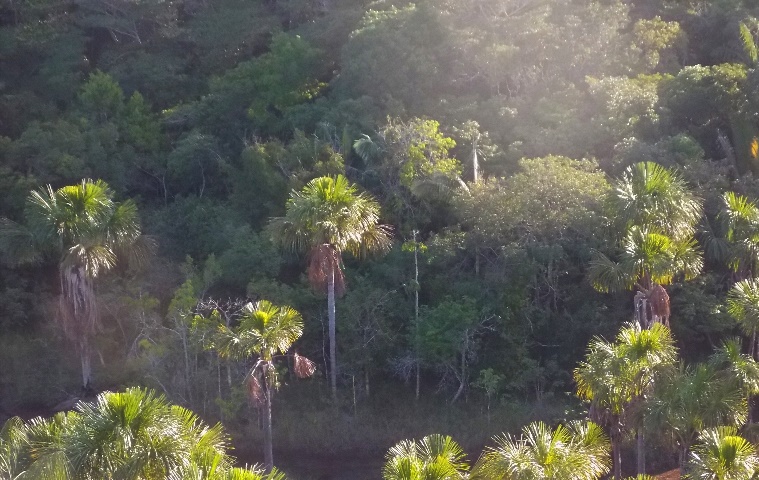Languages
Part of the Amazon rainforest may be more resistant to drought than we thought.
This research is part of the doctoral thesis of the PPG-Ecology student Thaiane Sousa, supervised by the doctors Flávia Costa and Juliana Schietti.
Reference: Sousa, T. R., Schietti, J., Coelho de Souza, F., Esquivel ‐ Muelbert, A., Ribeiro, I. O., Emílio, T., Pequeno, P.A.C.L., Phillips, O., Costa, F. R. C. (2020). Palms and trees resist extreme drought in Amazon forests with shallow water tables. Journal of Ecology.
How do forests under surface water table (<5 m) respond to extreme droughts? Do these effects change between trees and palm trees?
It was in order to answer these questions that the study entitled “Palms and trees resist extreme drought in Amazon forests with shallow water tables” was developed, published in the Journal of Ecology.
The frequency and intensity of extreme droughts has increased in the Amazon region in recent decades. Due to its extensive area (≈6 million km2), large carbon stock and exceptional species richness (≈15 million tree species), the response of these forests to extreme events will affect biodiversity and global climate. Studies have shown that the water deficit associated with recent droughts has reduced the growth rate and increased the mortality rates of the trees, reflecting less absorption and greater carbon emissions into the atmosphere. This evidence reinforces the concern that the Amazon ecosystem is vulnerable to extreme droughts and its consequences can be threatening to life on the planet.
However, little is known about how the local hydrological condition affects this process. Thousands of kilometers of the Amazon basin are covered by poorly drained areas, about 36% of this entire region is covered by forests on surface water tables (<5 m in depth). This subsoil water can minimize the effects of drought on plants and alter predictions of vulnerability to drought in forests.
In this very unique study, the dynamics of palms and trees in forests were monitored over a transect of 600 km of landscapes dominated by surface water table, during a period that captures the intense drought of 2015–2016. The study was conducted in permanent plots along the federal highway BR-319, following the standardized RAPELD method of trails and sampling of the PPBio Program.
The survey results show that:
1. Palm trees are no more vulnerable to extreme drought than trees.
2. There was no loss of biomass in response to drought in these forests.
3. The severe drought in 2015 did not increase mortality rates for palms and trees, but instead promoted higher recruitment rates.
4. Extreme droughts have not had a negative impact on trees and palms that grow on the surface water table.
Therefore, there is a complex interaction between climatological drought and access to groundwater, which is reflected by the dynamics of vegetation. The results indicate the crucial need to incorporate the interaction between the atmospheric climatic condition and the hydrological condition below the ground for better assessment and elaboration of environmental impact models for forecasting the effects of drought in the Amazon and definition of priority areas for conservation.
The study suggests that large areas of western Amazonia, in addition to riparian areas throughout the basin, which have surface water tables, may function as hydrological refuges during droughts, and therefore should receive special protection to ensure the conservation of ecosystem services in the Amazon. .


